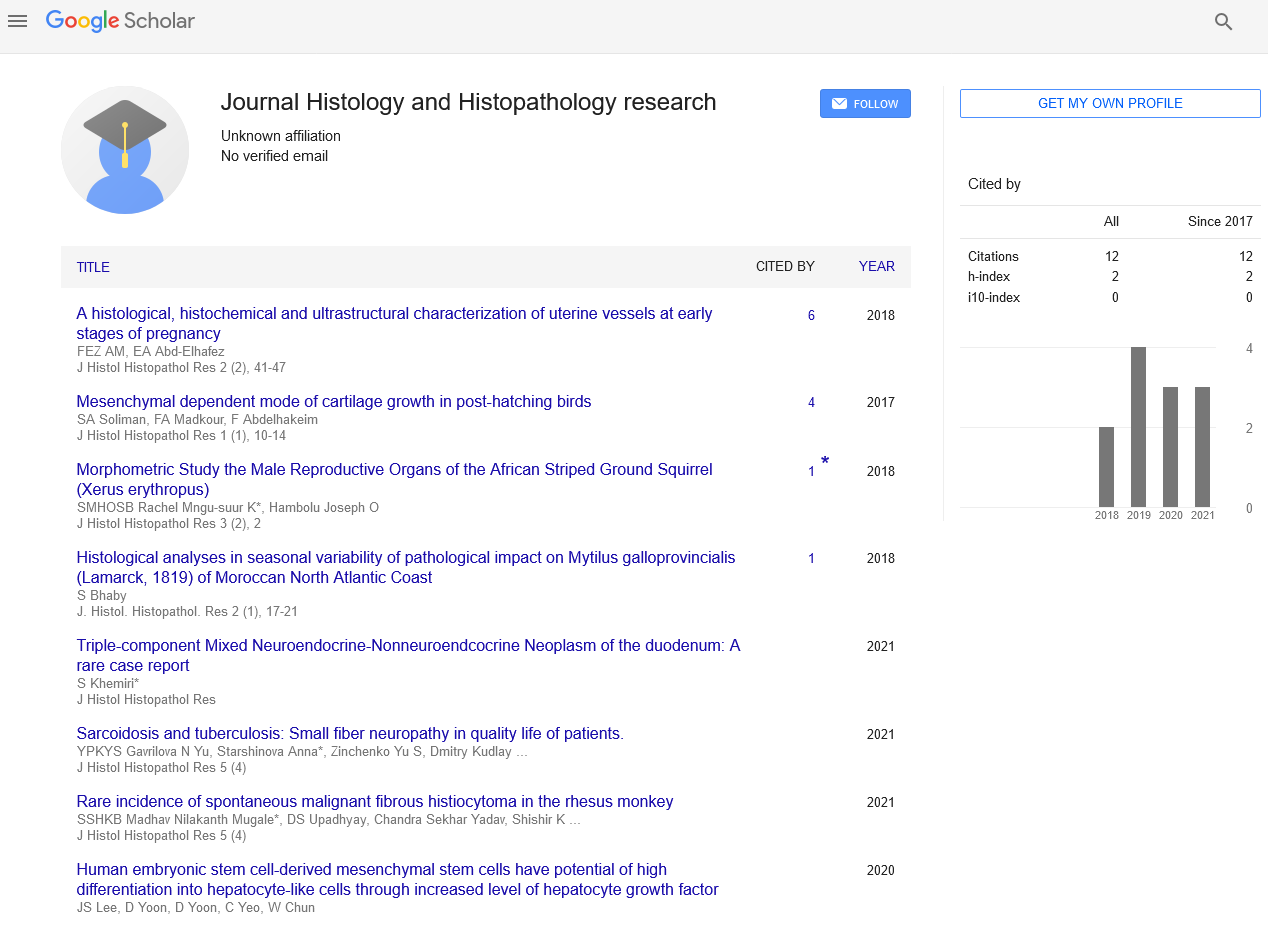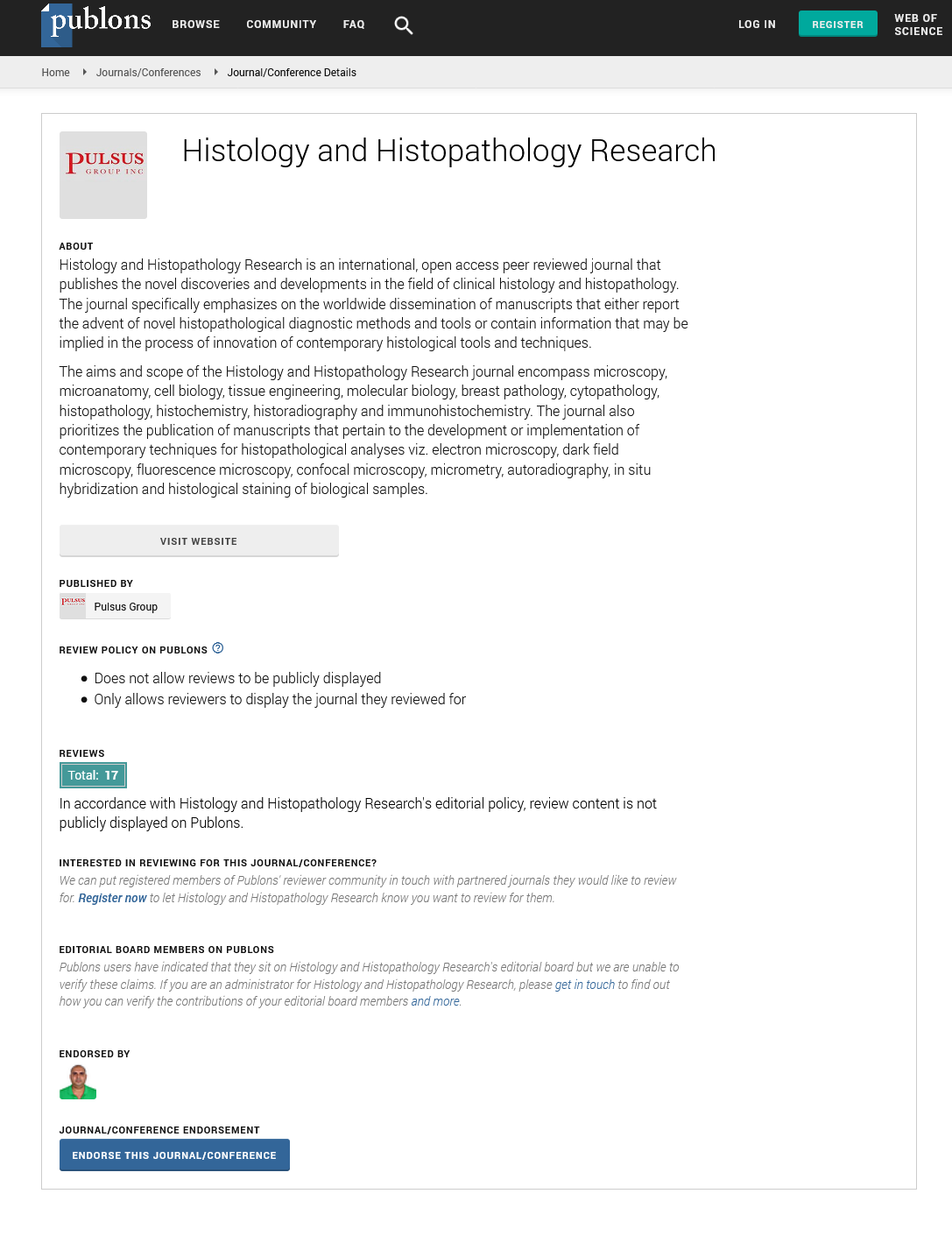Anti-MPT64 immunostaining of tissues and aspirates for rapid and specific diagnosis of extrapulmonary tuberculosis
Received: 03-Mar-2022, Manuscript No. PULHHR-22-4600; Editor assigned: 05-Mar-2022, Pre QC No. PULHHR-22-4600; Accepted Date: Mar 22, 2022; Reviewed: 17-Mar-2022 QC No. PULHHR-22-4600; Revised: 20-Mar-2022, Manuscript No. PULHHR-22-4600; Published: 27-Mar-2022, DOI: 10.37532/pulhhr.22.6(2).66-67
This open-access article is distributed under the terms of the Creative Commons Attribution Non-Commercial License (CC BY-NC) (http://creativecommons.org/licenses/by-nc/4.0/), which permits reuse, distribution and reproduction of the article, provided that the original work is properly cited and the reuse is restricted to noncommercial purposes. For commercial reuse, contact reprints@pulsus.com
Abstract
Since time immemorial, Extrapulmonary Tuberculosis (EPTB) has been a major cause of misery. Tuberculosis may damage any organ system in the body. Pott's spine in Egyptian mummies has molecular genetic evidence of infection with the Mycobacterium tuberculosis complex. EPTB accounts for around 15% to 20% of all TB cases, with a large range of variability (4% to 48%) among reporting nations of notified TB cases. Its yearly global incidence has risen over the previous decade as a result of altered TB control techniques, population increase, and the development of the Human Immunodeficiency Virus (HIV). EPTB is believed to affect more than half of HIV-infected people. lymphoma. This rare case suggests that thymic MALT lymphoma can develop with an autoimmunue disease such as Sjögren's syndrome, surgical resection of thymic tumor should be performed after careful preoperative prepration.
Keywords
Extrapulmonary tuberculosis; Immunostaining
Commentary
Since time immemorial, Extrapulmonary Tuberculosis (EPTB) has been a major cause of misery. Tuberculosis may damage any organ system in the body. Pott's spine in Egyptian mummies has molecular genetic evidence of infection with the Mycobacterium tuberculosis complex. EPTB accounts for around 15% to 20% of all TB cases, with a large range of variability (4% to 48%) among reporting nations of notified TB cases. Its yearly global incidence has risen over the previous decade as a result of altered TB control techniques, population increase, and the development of the Human Immunodeficiency Virus (HIV). EPTB is believed to affect more than half of HIV-infected people.
EPTB diagnosis has always been difficult for professionals. According to the World Health Organization, the diagnosis of EPTB should be based on a culture-positive material, caseating granuloma on biopsy, or significant clinical evidence compatible with active EPTB. However, due to EPTB's pauci-bacillary nature, conventional procedures such as culture and staining for Acid-Fast Bacilli (AFB) make it difficult to demonstrate M. tuberculosis. Ziehl-Neelsen (ZN) staining or Lowenstein-Jensen (LJ) culture are negative in 35 to 65% of EPTB patients. Furthermore, the findings of testing for tuberculosis infection, such as tuberculin skin tests or interferon-gamma release assays, may be deceptive.
Second, conventional cytology and histology cannot differentiate between illnesses caused by TB or non-TB mycobacterium, as well as chronic inflammatory disorders. Thus, even after several biopsies or aspirations, TB remains undetected in 20% of patients. Furthermore, EPTB is difficult to detect because to the exceedingly diverse clinical presentation that varies based on the organ affected, disease stage, and host immunological response. During a patient's assessment, the potential of EPTB is frequently added to the differential diagnosis. As a result, the EPTB diagnosis is frequently determined by combining many vague results from several examinations. The requirement to use intrusive procedures to gather specimens in the majority of EPTB cases complicates the EPTB diagnostic approach even further.
Newer techniques, such as radiometric and nonradiometric assays, as well as improved molecular methods for identifying M. tuberculosis, have improved diagnostic capacity in the last decade, but their use in resource-constrained settings where TB remains a significant public health problem is limited. In this case, the choice for an empirical course of antibiotic therapy frequently comes before evidence-based diagnosis. These issues underscore the need for advancements in EPTB diagnosis procedures.
From July 2007 to March 2010, the research was carried out at Ujjain Charitable Hospital in Ujjain, India. Fine-needle aspirate smears and surgical samples were obtained from the Pathology Department. The patients' or the records' detailed clinical outcomes were collected. Surgical samples from non-TB (control) lesions were also collected from the Haukeland University Hospital's Department of Pathology in Bergen, Norway. As known positive controls, two known pulmonary tuberculosis biopsy specimens from the archive with a high bacterial burden were employed.
The obtained tissues were treated for ZN staining, LJ culture (not for all biopsies), cytology or histology evaluation, anti-BCG and anti-MPT64 immunostaining, and IS6110 Polymerase Chain Reaction (PCR). The ultimate diagnosis of tuberculosis was based on the presence of AFB on ZN stain and/or M. tuberculosis on culture, as well as a positive IS6110-based nested-PCR. When all of the above-mentioned criteria were met, specimens were classed as non-TB. Biopsies or aspirates from patients with pulmonary tuberculosis, those under the age of 14, and those on corticosteroid or immunosuppressive medication were all excluded from the research.
A 22-G needle was used to perform fine-needle aspiration from the bulk under sterile conditions. One portion of the aspirate was submitted for culture, while the remaining portion was utilised to prepare numerous smears. For cytological analysis, the slides were air dried and stained with May-Grunwald-Giemsa stain, ZN staining, and 3 to 5 smears were ethanol fixed and utilised for PCR and immunostaining. On microscopic inspection, the cytological results were divided as necrotic granulomas, necrotic material including mostly degenerated neutrophils, lymphocytes, and epithelioid cells, and non-necrotic granulomas based on the quantity of necrosis, the type of cells, and their organization. The biopsies were preserved in 4% phosphate-buffered formaldehyde for typical paraffin embedding, then stained with hematoxylin-eosin and ZN using the heat carbol fuschin procedure. Following slices were taken on three special capillary gap slides (Dako A/S, Denmark) for immunostaining and five to six thick sections in Eppendorf tubes for PCR. To avoid contamination, after sectioning each sample, the blade was cleaned with 96% ethanol; negative controls were sectioned first, followed by test blocks and positive control blocks. The existence and kind of epithelioid granulomas (well-organized and nonorganized) as well as the presence or absence of necrosis were all investigated in the biopsy sections. 12 Before formalin fixation, a portion of the material was submitted for mycobacterial culture on LJ medium.
Immunostaining was conducted on all smears from aspirates and tissue slices using the Dako kit (EnVision+System-HRP; Dako, Glostrup, Denmark) to demonstrate the presence of mycobacterial antigens MPT64 and BCG, as previously reported in detail. In summary, the alcohol-fixed aspirate smears were washed in phosphate-buffered saline and hydrated with decreasing grades of alcohol. Tissue sections were deparaffinized and hydrated before microwave antigen retrieval using citrate buffer, pH 6.2, at 750 W for 10 minutes and 350 W for 15 minutes. The portions were allowed to cool for 20 minutes at room temperature.
After that, all of the slides (aspirate and biopsy) were treated in hydrogen peroxide for 5 minutes. to reduce endogenous peroxidase activity, followed by primary antibody incubation: I rabbit polyclonal anti-BCG antibody (Dako, Hamburg, Germany) at 1/5000 dilution for 1 hour after 3 minutes of treatment with 3% bovine serum albumin; (ii) in-house rabbit polyclonal absorbed anti-MPT64 antibody at 1/250 dilution for 1 hour. To eliminate cross-reactive antibodies, anti-MPT64 was absorbed using an MPT64-nonproducing BCG strain, as previously described. For 45 minutes, the bound antibodies were detected using a secondary antibody anti-rabbit dextran polymer linked to horseradish peroxidase. Positive signals were seen as reddish brown using a 3-amino-9-ethylcarbazol and hydrogen peroxide-containing substrate and counterstained for 1 minute with Harris hematoxylin before being mounted in an aqueous immunomount (Sigma Chemical) for microscopy.
The material was incubated for 20 minutes at 80°C before being centrifuged at 5000g for 2 minutes. The supernatant was either utilised for PCR amplification or kept at 20°C until needed. Deparaffinization, digestion, and DNA extraction for biopsy were carried out in accordance with the previously published process. The extracted DNA from each specimen was amplified in triplicate by nested-PCR for a 123-base pair fragment from IS6110 in the first round of the reaction using the coding sequence primers 5′CCTGCGAGCGTAGGCGTCGG3′ and 5′CTCGTCCAGCGCCGCTTCGG3′.The PCR mix was made up of 5 L of eluted DNA+25 L of HotStarTaq master mix (Qiagen, West Sussex, UK)+0.25 L of each 100 M primer stock solution+distilled water for a total volume of 50 L. The template for nested-PCR was 1 L of the first PCR product. All PCR assays included positive and negative controls, as well as a random sample retest. The gold standard for diagnostic confirmation of anti-MPT64 immunostaining was nested-PCR. Overall sensitivity, specificity, and positive and negative predictive values for immunostaining with anti-MPT64 were 100%, 97%, 97%, and 100%, respectively.
In conclusion, our work sheds light on the viability of adopting the approach as a standalone diagnostic technique for better EPTB patient treatment in contexts where culture or molecular resources are unavailable.






